#water contamination
Text
Buy a $15 water test. Test your public water.
Mine tested positive for azatrine today. Azatrine is an herbicide that severely messes with your reproductive system in both men and women. Ovarian cancer, breast cancer, prostate, etc. Especially in kids.
Azatrine was reapproved by the Environmental Protection Agency for use until at least 2035. Along with that approval, 50% more was allowed to enter the waterways than before. In the UK it's banned. In California they found severe health effects in rates exposed to the legal limit.
The legal limit =/= the safe limit.
I live in an apartment complex within a densely populated city.
That water test kit tested for things like lead, high nitrates, etc. And it only tested for 2 pesticides. There are hundreds.
Buy a $15 water test kit. Test your water. Tell me what you learn.
#health#water#$500 for the water filter that can remove azatrine and it's one of the most commonly found pestacides in water in the US#activism#water contamination#water pollution#human rights
102 notes
·
View notes
Text
Second Rate Britain 3
Everyone knows that the predominantly foreign-owned water companies in the UK discharge millions of tonnes of untreated sewage into our national water system and onto our beaches, while issuing huge bonuses to their CEO's and massive profits to their shareholders. But, despite the catastrophic effect this has on our environment, we can at least avoiding nose-to-nose contact with human waste if we refrain from swimming in our rivers or visiting the coast.
When it comes to the dangers lurking in our drinking water we have no such options, and according to some reports we are being slowly poisoned. In particular it is our children and developing foetuses who are most at risk.
“UK ‘flying blind’ on levels of toxic chemicals in tap water" (Guardian 25/03/21)
British drinking water, like many water supplies across the world, is contaminated by a group of chemicals known collectively as PFAS. They are also known as “forever chemicals” as they do not break down in the environment. These chemicals - over 4000 of them - have been linked to a number of illnesses:
“...testicular cancer, thyroid disease, ulcerative colitis, high cholesterol and pregnancy-induced hypertension. PFOS has been associated with reproductive, developmental, liver, kidney, and thyroid disease. At lower levels PFAS have been associated with immunotoxicity." (Guardian 23/02/23)
These chemicals have been found in 17,000 sites across the UK. The Drinking Water Inspectorate’s guidelines state that at concentrations above 100 ng/1 water companies should take action to reduce PFAS before supplying water to people’s homes. But the level of 100ng/l is below that recommended as safe in the EU.
“A BBC study found PFAS levels exceeded European safety levels in almost half of the samples taken. However, none exceeded the current safety level in England and Wales.” BBC News: 19/03/23)
I’m not sure that those who voted for leaving the EU really did so to allow the UK government to sanction dangerously high levels of contaminants in our drinking water. The EU safety standard is 2.2ng/l, the UK standard is 100ng/l, a level almost 50 times higher.
In Denmark, the level of permitted PFAs is even smaller than that for the EU.
“…the Danish Environmental Protection Agency announced that drinking water must not contain more than maximum two nanograms per litre of the total sum of the following four PFAS substances: PFOA, PFOS, PFNA and PFHxS." (tox.dhi.dk: 07/23/21)
In the US:
“The US Environmental Protection Agency has taken the extraordinary step of setting legal drinking water limits for six of the most studied and toxic PFAS compounds, known commonly as “forever chemicals”, that are at the center of an ongoing environmental crisis." (Guardian: 14/03/23)
In Britain the government has issued a paper titled “PFAS and Forever Chemicals" in which they state:
“Water companies have a duty to ensure water is wholesome. There are currently no statutory standards for PFAS in drinking water England and Wales.” (dwi.gov.uk : 2022)
Although the UK does not have “statutory standards” for PFAS in our drinking water, the Drinking Water Inspectorate did offer “guidelines” to the water companies. While scientists warn that allowable levels of toxic PFAS in UK drinking water are too high (BBC News:19/03/23) the Drinking Water Inspectorate says
“A few companies have detected traces of PFAS in some source waters, although the monitoring data shows the large majority of sources are not affected. Water supplies are made safe through a combination of treatment processes and managed dilution through blending, to achieve stringent regulatory standards, before reaching the consumers tap.” (dwi.gov.uk : 2022)
What this means is practice is that water companies are legally allowed to dilute the poisonous “forever" chemicals with uncontaminated water. They do not have to remove them. So, if the PFAS level was 200 nanograms per litre (200ng/I) and the water companies dilute the water so it is 100mg/l I now have to drink two glasses of water instead of one to poison myself as the chemical build up in the body is accumulative.
If that were not bad enough, the UK government trusts the water companies to do the testing and “clean up” of these contaminants themselves. So the same companies that are illegally pumping millions of tonnes of untreated raw sewage into our rivers and seas are trusted to check for and dilute PSAF concentrations. And even when diluted to the UK governments recommended levels of acceptable contamination, those levels are 50 times higher than in many other countries.
We truly do have a poisonous government, a government that puts peoples health second to the profits of the water companies.
#uk politics#water contamination#PFAS#toxiidity#health#disease#regulation#sewage#poison#dangers#drinking water
7 notes
·
View notes
Photo
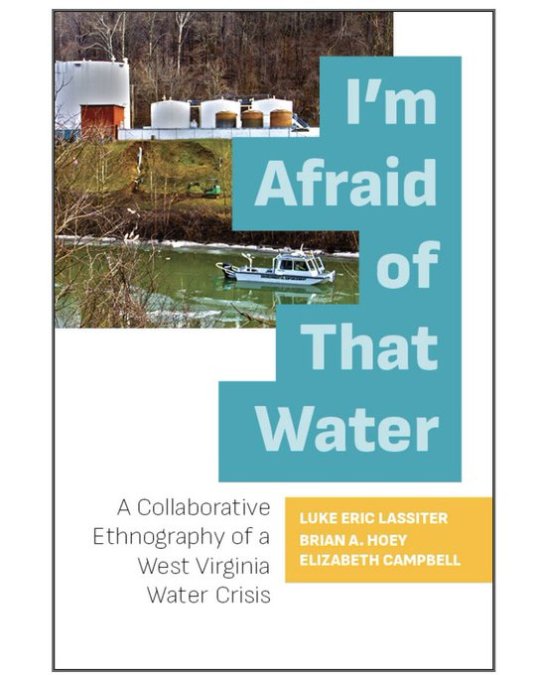
Free PDF from West Virginia University Press on the 2014 Elk River Chemical Spill
On January 9, 2014, residents across Charleston, West Virginia, awoke to an unusual licorice smell in the air and a similar taste in the public drinking water. That evening residents were informed the tap water in tens of thousands of homes, hundreds of businesses, and dozens of schools and hospitals—the water made available to as many as 300,000 citizens in a nine-county region—had been contaminated with a chemical used for cleaning crushed coal.
This book tells a particular set of stories about that chemical spill and its aftermath, an unfolding water crisis that would lead to months, even years, of fear and distrust. It is both oral history and collaborative ethnography, jointly conceptualized, researched, and written by people—more than fifty in all—across various positions in academia and local communities. I’m Afraid of That Water foregrounds the ongoing concerns of West Virginians (and people in comparable situations in places like Flint, Michigan) confronted by the problem of contamination, where thresholds for official safety may be crossed, but a genuine return to normality is elusive.
8 notes
·
View notes
Photo

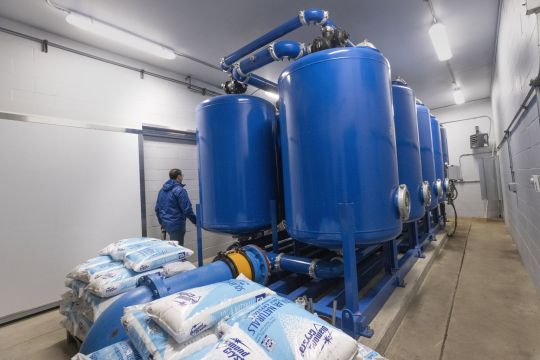
More ‘forever chemicals’ found in WA drinking water as cleanup costs mount
Dec. 11, 2022 Seattle Times (paywall)
570,000 people, 7.4% of the state’s population, according to a Seattle Times analysis of test results
LAKEWOOD, Pierce County — The water pumped from the ground here was once considered pure enough to mix with a little chlorine and then pipe directly to homes.
Today, every gallon from two water district wells must first be flushed through six enormous tanks, each filled with 40,000 pounds of specially treated coal, to remove contaminants.
This pollution, known as “forever chemicals” or PFAS, can increase health risks for certain cancers and other diseases when present in drinking water in minuscule concentrations measured in parts per trillion. Lakewood is one of more than a dozen Washington public water systems with detections above levels defined by the state to be suitable for long-term consumption — and widespread testing is just ramping up.
a massive legal battle is playing out across the country as more than 200 providers of public drinking water, including Lakewood, sue manufacturers, distributors and in some cases the Defense Department in federal court to determine who will pay the cleanup bills that will tally in the billions of dollars.
In December 1988, 3M chemist Eric Reiner wrote a memo to his colleagues about the corporation’s firefighting foams formulated with PFAS.
For years, the corporation’s marketing pitch portrayed them as “biodegradable.” Reiner termed this a “myth” that was not in 3M’s long-term term interest to perpetuate.
“It is probable that this misconception will eventually be discovered, and when that happens, 3M will likely be embarrassed, and we and our customers may be fined and forced to immediately withdraw products from the market,” Reiner warned.
3M no longer produces the foams that contained PFOA and PFOS. Reiner’s memo is one of many internal 3M documents put into the public record in the avalanche of litigation now consolidated in the U.S. District Court of South Carolina.
3M and other manufacturers initially sought to have many lawsuits dismissed based on case law that has sometimes granted immunity from liability to contractors supplying products requested by the U.S. military.
In a Sept. 16 opinion, U.S. District Court Judge Richard Mark Gergel of South Carolina found 3M and other defendants “knowingly withheld” information detailing the full risks of the product and denied that motion.
#washington state#public water system#PFAS#forever chemicals#3M#water contamination#water purification#2022
10 notes
·
View notes
Text
Yellowstone River Derailment
The Yellowstone River has been contaminated by a train derailment, triggering water conservation warnings downstream.
On Saturday, a bridge over the Yellowstone River collapsed under a train carrying hot asphalt and molten sulfur. Witnesses could see yellow fluid, definitely the sulfur, leaking into the water immediately following the accident. No one was injured in the accident, which derailed…

View On WordPress
#david stamey#montana department of environmental quality#montana rail link#spill#stillwater county#train derailment#water contamination#Yellowstone#yellowstone county#Yellowstone River
3 notes
·
View notes
Link
capitalist ‘accountability’ / environmental ‘justice’
Coterra entered a plea to Prohibition Against Discharge of Industrial Wastes, a violation of the Clean Streams Law. As part of the plea agreement, Coterra will pay $16.29 million toward a new regulated public water line as well as payment of 75 years of water bills for the impacted homeowners. This money will also be used to provide treatment systems to treat the homeowners’ water supplies and the provision of bottled water while the public water line is under construction. [Attorney General Public Relations]
here’s a related art project from 2016:
Neztlū Waters® Pure Frack® Privatized Water™
#water justice#water rights#water#human rights#fracking#environmentalism#environment#big oil#nature#neztlu#water is life#pure frack#privatized water#capitalism#neztlu waters#gas industry#cabot#epa#reparations#pennsylvania#department of environment#water contamination#coterra energy#fossil fuel#fossil fuel industry#environmental degradation#climate change#environmental justice#mike ludwig#dimock
4 notes
·
View notes
Text
Types of water contamination in oil
In our last #knowyouroil segment, we had discussed about Particle Contamination and its effect on the life of rotating parts. Companies spend a lot of money on installing filtration units to counter particle contamination but never take preventive measures towards water contamination. Water is a worse and silent killer for the life of machinery as it slowly degrades the oil properties and one only gets to know about it when the machine fails pre-maturely.

In this article, we will try to understand the basics of Water Contamination. We will also try to answer the following questions.
1. What water does to oil properties?
2. Can we see water contamination as soon as it starts?
3. What to do if our oil is contaminated?
To check your machine's, follow: https://www.linkedin.com/company/minimacsystemsprivatetlimited
There are three phases in which water can exist in oil i.e. dissolved water, emulsified water, and free water.
Dissolved Water: It is characterized by individual water molecules dispersed throughout the oil. Water can remain in a dissolved state and hence difficult to understand the contamination at this stage.
Emulsified Water: When the oil gets saturated with water it starts to exist as a suspension in oil like microscopic droplets giving oil a milky appearance and is called emulsion.
Free Water: When the level of oil in water increases further it leads to separation of oil and water called Free water.

For a lubricant, the most important property is its viscosity. As the water starts to mix with lubricant it starts to alter the viscosity and hence impacts the film strength which is essential in maintaining equipment reliability by keeping moving parts away from each other. Water contamination also impacts the chemical properties of the base oil by acting as catalyst oxidation and aeration. This also leads to the appearance of sludge and varnish which leads to premature failure.
Water contamination also leads to Hydraulic Pump Cavitation in machines:
Pitting inside of the machine; as the water droplets burst under pressure and high temperature creating microfractures on the machine’s surface.

If you see the signs of water contamination in your oil, what should you do?
1. Not to change oil as changing oil is not the only option. This is because once the oil is drained the impurities still remain in the system until they are flushed. If new oil is introduced without cleaning the system it leads to contamination of the new oil leading to no change in the premature breakdown situation.
2. Flushing of the system
3. Check the internals of the system to check for any damage
4. Filter the new oil to ensure no moisture is available in the oil
5. Skip all four steps and call Minimac (+91 7030901266)
We at Minimac Systems Pvt Ltd. not only design a maintenance schedule for the lubrication oil but also provide OIL TESTING and FILTRATION services as per the ISO standard of Super Clean Oil. Minimac stands for MINImum MAChinery Maintenance.
2 notes
·
View notes
Text
Water Contamination in Walkerton, Ontario, Canada (2000)
In May 2000, Escherichia coli and Campylobacter jejuni contaminated the drinking water supply in Walkerton, Ontario. Seven people died and over 2,000 were ill as a result. The Ontario Provincial Government set up a judicial Inquiry into the circumstances surrounding the outbreak and also moved quickly to introduce a new Drinking Water Regulation that incorporated some significant requirements for drinking water providers.

Basically many people were intoxicated by a bacteria that was in the water that everyone drank many people from Ohio also died from the same issue from that water, so that's why people started the protests.

0 notes
Text
Understanding Forever Chemicals in Water: A Comprehensive Guide to Limiting Their Impact
Forever chemicals, also known as PFAS (per- and polyfluoroalkyl substances), have become a growing concern in recent years due to their pervasive presence in our environment, particularly in water sources. These synthetic chemicals are resistant to degradation, which means they persist in the environment indefinitely, hence the name “forever chemicals.” Their widespread use in various industrial…
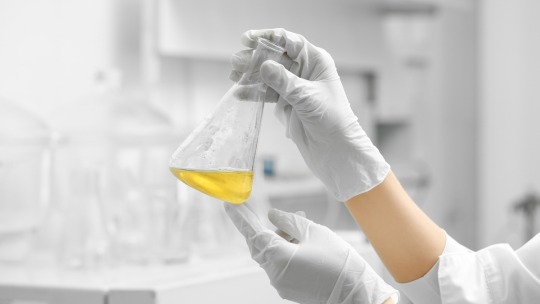
View On WordPress
#chemical exposure#contamination mitigation#environmental health#environmental impact#forever chemicals#PFAS#water contamination#water pollution#water quality#water treatment
0 notes
Text
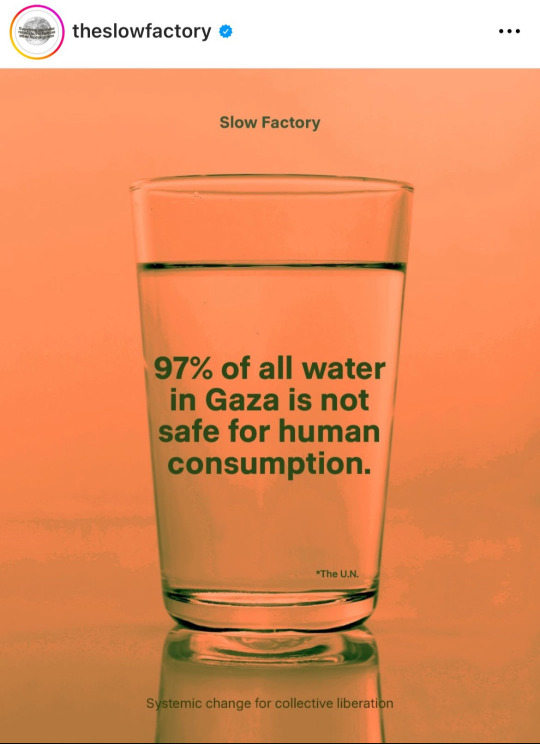
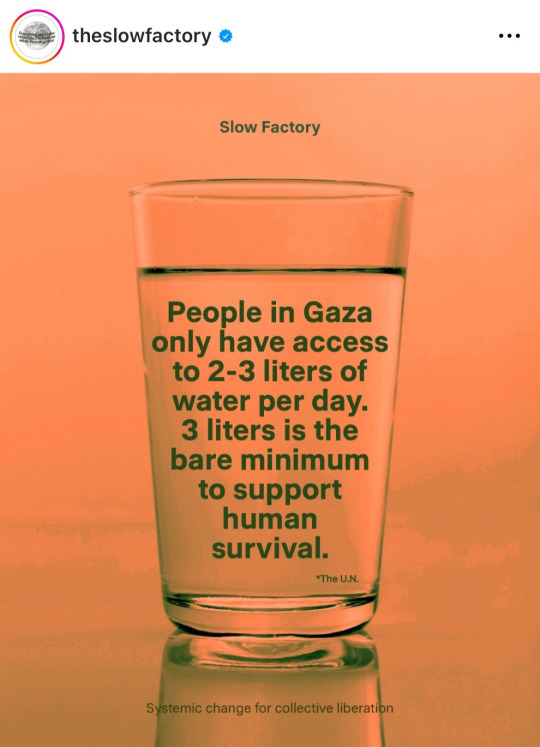
#free palestine#gaza#palestine#free gaza#from the river to the sea palestine will be free#pray for palestine#🍉#contaminated water#clean water#water#humanitarian crisis#gaza strip#disease#diseases#israel#israel is committing genocide#genocide#ceasefire#permanent ceasefire#america#usa
4K notes
·
View notes
Text

Oh good, I’m glad it wasn’t too serious a leak or contamination…though I am worried about how much the local fauna and flora were affected and damaged in the area where this chemical leak occurred
0 notes
Photo

Earth Day - Respect Mother Earth - Environmental Awareness T-Shirt
Water Fishable Drinkable Swimmable - Earth Day and awareness for how much we are polluting and harming our world. Water Conservation Save Our Home Peace Earth Day
#water conservation#water contamination#water consumption#water conditions#save mother earth#earthday2023#earth day 2023#awareness
0 notes
Photo

Colorado creek water turned pink, but that doesn't mean it tastes like Kool-Aid
Colorado's pink water mystery has been solved. Yesterday, CBS Colorado and other news outlets reported on a case of rose-colored wastewater that has been flowing in Colorado's Clear Creek since Sunday, but nobody knew its source (see video below). Turns out, it was not spillage from a Kool-Aid Qult ritual, nor was it pink algae or anything else of a toxic nature. — Read the rest
https://boingboing.net/2023/03/16/colorado-creek-water-turned-pink-but-that-doesnt-mean-it-tastes-like-kool-aid.html
0 notes
Text
Water conservation is the practice of using water efficiently to reduce unnecessary water usage. According to Fresh Water Watch, water conservation is important because fresh clean water is a limited resource, as well as a costly one.
1 note
·
View note
Text
Can all contaminants be seen with naked eyes?
As a part 2 of #knowyouroil series, we will discuss about Particle Contamination. Whenever we talk about contamination the first thing that comes to our mind is solid particles that we can see or feel. But what we do not understand is how big a particle can really cause wear and tear to your machines, can all contaminants be seen with naked eyes? Is it too late to wait until then?
To answer the above questions we must first understand the actual clearance size of the different types of lubrication film formed between rolling> and rotating components which is essential for providing proper lubrication. Oil film thickness in machinery is measured in microns (µm), or one-millionth of a meter.


The contaminants that are considered to be most damaged are from size 2 to 20 µm and avoiding these are key to keeping your machinery breakdown free.>


Get your machine's oil check today with our technical expert call +91 7030901266. Ask for a brochure today.
We at Minimac System Pvt. Ltd. not only design a maintenance schedule for your lubrication oil but also provide OIL TESTING and FILTRATION services and the filtered oil complies to the ISO standard of Super Clean oil as we stand for MINImum MAChinery Maintenance.
#frf#oil flushing#minimac systems#power#minimac#oil & gas#hydraulic oil#lube oil filter#contamination#hydraulic oil filter#oil filters#filters#lube oil flushing#chemical cleaning#electrostatics lube cleaner#oil dehyration#oil dehydration systems#transformation oil purification#coalser separator#metal#mining#steel#oil and gas#oil lubrication#oil contamination#water contamination#contamination control#transformer oil#transformer oil cleaning#transformer oil filtration
0 notes
Link
1 note
·
View note